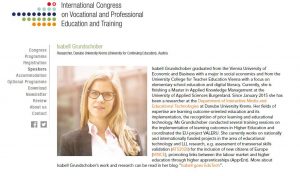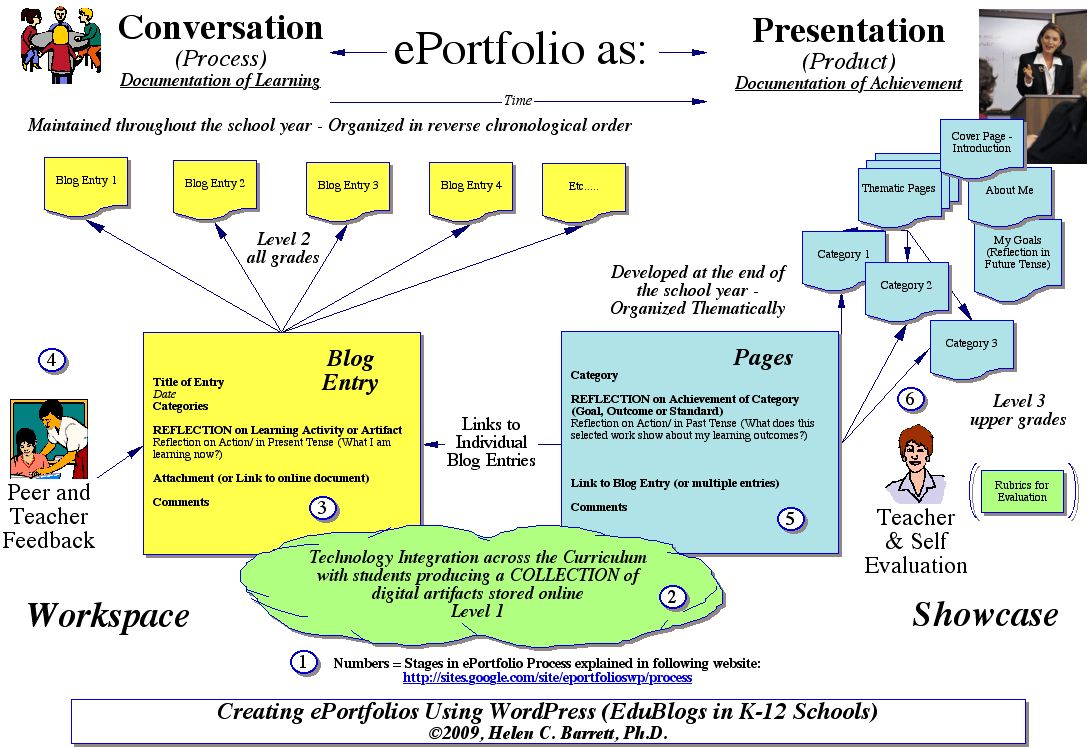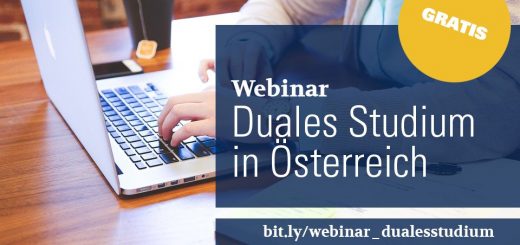VPET18: Building Bridges between Labour Market and Higher Education
I was very happy that VPET18 accepted my abstract and I was allowed to present the ApprEnt project at the conference with, all in all, 500 participants from all over the world. During the congress especially aspects like disruptive change and how to prepare companies and employees for change were in focus. The development of transversal skills and 21st century skills were identified as main resources to face disruption, technological change and the risk of automation of jobs for employees.
On Friday, 8th of June, I held the workshop “ApprEnt – Refining Higher Education Apprenticeships with Enterprises in Europe. Supporting Collaboration and Learning by Using the ePortfolio Approach” two times, in the morning session and in the afternoon session. Approx. 100 people participated in my workshop – so you can imagine, I was quite excited! 🙂
Refining Higher Apprenticeships through Mentorship and ePortfolios
In my presentation I presented ApprEnt and its aim to support the connection and collaboration between higher education and companies. Dual study programs or higher apprenticeship models can help to blend two types of learning: Informal learning at the workplace and formal learning in Higher Education. Mentorship is crucial, both on the company side as well as in Higher Education. The ePortfolio approach supports mentorship as it is a basic aspect of using ePortfolio in a self-directed way. The ATS2020 project showed how the ePortfolio learning model can help to develop subject skills and knowledge as well as transveral skills aka 21st century skills.
This is also in line with the other speakers of the conference, which were pointing out the importance of fostering soft skills and 21st century skills in vocational education to answer disruptive change.
My Presentation Slides
A Recording of my Presentation
Thank you to the kind young women taking the video during my talk 🙂 and also I’d like to thank Gavin Clinch for giving the impuls of having the presentation recorded!
Discussion after the Presentation
Q: How does a ePortfolio look like? What content is included?
A: Check out my Mahara ePortfolio, which I did to document our dissemination activties of the ATS2020 project. Here you can see that I post in chronological order dissemination activities and accomplishments. It is a showcase portfolio. My personal ePortfolio, isabellgru.eu, is a mix between showcase portfolio and learning diary. I also use Evernote as a learning diary, but I keep it almost completely private. Certain content from my private Evernote I also use for my public ePortfolio. Furthermore, it is helpful to publish desired learning outcomes and connect them to learning artefacts.
Q: Who exactly is a mentor? Whats the difference to a teacher?
A: I use the terms “mentor” and “teacher” interchangeably, as there is a shift vom teacher-centred to learner-centred teaching and learning. A teacher needs to develop from knowledge transfer to a mentor, supporting individual learning pathways. In dual study program, each student has two mentors: A mentor at the company and a mentor in higher education, supporting the sense-making process between informal and formal learning.
Q: How old are the learners using the ePortfolio approach? Could the ePortfolio approach also be used with younger students?
A: The ePortfolio approach could be used with learners from approx. 7 years on, of course it needs scaffolding of different competences with the help of the teacher-mentor. In ATS2020 we piloted the ePortfolio approach with students between 10 and 15 years old in all over Europe. In my Department of Interactive Media and Educational Technologies at Danube University we use ePortfolio approach as part of the learning process with adults.
Q: How motivated are students to give peer-feedback and to exchange their ideas?
A: Peer-feedback activities are recommended, as well as exercises and an introduction to the working-out-loud approach. Also, the fear of making mistakes and others knowing about it, can lead to less sharing of recent work. We created a pattern collection for formative feedback, which helps to establish an environment, where formative feedback can emerge in class/ in a learning group.
Q: For which disciplines is the dual study program suitable?
A: Dual studies could be established in all different kinds of disciplines. It is popular in healthcare but also in software development and other STEM-related studies.
Q: How often should students present their learning developments & outcomes?
A: Regular presentations of the student’s learning developments support the mentors’ understanding of the learner context and the learner identity. Also continuous monitoring of the ePortfolio can support this. It is recommended to have fixed dates for presentations and feedback in each semester, 2 times minimum are recommended. There should be a presentation at the end of the learning phase (e.g. end of semester) to present all the learning outcomes in a showcase ePortfolio.
Is it necessary that the employer or mentor needs to go through the entire ePortfolio of an apprentice?
No, it is not necessary to go through te entire ePortfolio, also they may not have access to the entire ePortfolio. The student owns the ePortfolio and can decide which parts to share. For a specific presentation of competence developmens or learning outcomes the students choose the relevant artefacts/ parts of the ePortfolio as a showcase.
A Look-Back to the Conference
The conference was a great opportunity to network – meeting potential project partners of future projects and also sharing out project developments in the ApprEnt project. I created a short video as a look-back to VPET18:
Webinar: Dual studieren in Österreich
Don’t miss the Webinar on June 18th at 1am CEST in German language about dual studying, with good practice examples and discussion about challenges and chances. Check out the Save-The-Date and register now!




